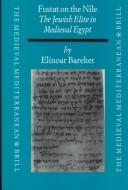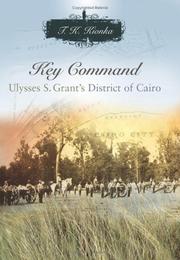| Listing 1 - 10 of 82 | << page >> |
Sort by
|
Book
ISBN: 1280698454 9786613675415 0809386593 1441645705 9781441645708 Year: 2009 Publisher: Carbondale Southern Illinois University Press
Abstract | Keywords | Export | Availability | Bookmark
 Loading...
Loading...Choose an application
- Reference Manager
- EndNote
- RefWorks (Direct export to RefWorks)
Cairo (Ill.) --- History.
Book
ISBN: 1617979155 1617979163 Year: 2018 Publisher: La Vergne : The American University in Cairo Press,
Abstract | Keywords | Export | Availability | Bookmark
 Loading...
Loading...Choose an application
- Reference Manager
- EndNote
- RefWorks (Direct export to RefWorks)
The map of a city is a palimpsest of its history. In Cairo, people, places, events, and even dates have lent their names to streets, squares, and bridges, only for those names often to be replaced, and then replaced again, and even again, as the city and the country imagine and reimagine their past. The resident, wandering boulevards and cul-de-sacs, finds signs; the reader, perusing novels and histories, finds references. Who were ʿAbd el-Khaleq Sarwat Basha or Yusef el-Gindi that they should have streets named after them? Who was Nubar Basha and why did his street move from the north of the city to its center in 1933? Why do older maps show two squares called Bab el-Luq, while modern maps show none? Focusing on the part of the city created in the wake of Khedive Ismail's command, given in 1867, to create a "Paris on the Nile" on the muddy lands between medieval Cairo and the river, A Field Guide to the Street Names of Cairo lists more than five hundred current and three hundred former appellations. Current street names are listed in alphabetical order, with an explanation of what each commemorates and when it was first recorded, followed by the same for its predecessors. An index allows the reader to trace streets whose names have disappeared or that have never achieved more than popular status. This is a book that will satisfy the curiosity of all, be they citizens, long-term residents, or visitors, who are fascinated by this most multi-layered of cities and wish to understand it better.
Streets --- Cairo (Egypt) --- History.
Book
ISBN: 0809370069 9780809370061 9780809370054 0809370050 Year: 2019 Publisher: Carbondale, IL
Abstract | Keywords | Export | Availability | Bookmark
 Loading...
Loading...Choose an application
- Reference Manager
- EndNote
- RefWorks (Direct export to RefWorks)
Lynching --- Cairo (Ill.) --- Cairo (Ill.) --- Race relations --- History. --- History
Book
ISBN: 1617973882 1617975052 9781617975059 9789774164040 9774164040 Year: 2010 Publisher: Cairo New York The American University in Cairo Press
Abstract | Keywords | Export | Availability | Bookmark
 Loading...
Loading...Choose an application
- Reference Manager
- EndNote
- RefWorks (Direct export to RefWorks)
Trying to make sense of the urban giant that is Cairo. "This book moves beyond superficial generalizations about Cairo as a chaotic metropolis in the developing world into an analysis of the ways the city's eighteen million inhabitants have, in the face of a largely neglectful government, built and shaped their own city. Using a wealth of recent studies on Greater Cairo and a deep reading of informal urban processes, the city and its recent history are portrayed and mapped: the huge, spontaneous neighborhoods; housing; traffic and transport; city government; and its people and their enterprises. The book argues that understanding a city such as Cairo is not a daunting task as long as pre-conceived notions are discarded and care is taken to apprehend available information and to assess it with a critical eye. In the case of Cairo, this approach leads to a conclusion that the city can be considered a kind of success story, in spite of everything" -- Cover.
Book
ISBN: 9210552601 Year: 2011 Publisher: Nairobi, Kenya : United Nations Human Settlement Programme,
Abstract | Keywords | Export | Availability | Bookmark
 Loading...
Loading...Choose an application
- Reference Manager
- EndNote
- RefWorks (Direct export to RefWorks)
Urbanization --- City planning --- Housing --- Cairo (Egypt) --- Growth.

ISSN: 09285520 ISBN: 9004114394 9004476458 9789004114395 9789004476455 Year: 1999 Volume: 24 Publisher: Leiden, Netherlands ; Boston, Massachusetts : Brill,
Abstract | Keywords | Export | Availability | Bookmark
 Loading...
Loading...Choose an application
- Reference Manager
- EndNote
- RefWorks (Direct export to RefWorks)
'Fustat Egypt which sits on the River Nile' - this is how the Jews called their city. Coalition and opposition, power struggles between leaders who were aided by local Jewish pressure groups and abetted by the Muslim authorities - these were a few of the characteristics of the leadership in the Jewish community of Fustat, the largest and liveliest of the Jewish communities in the eleventh century. The author follows the activities of these leaders and analyzes their motives in the light of the complex relationships developing in the community between the different ethnic groups, while in the background the traditional centers of Jewish authority in Palestine and Babylon battle each other for control of the Jewish people. The survey of the dramatic events was made by analysis of documents and letters from the Geniza in Cairo.
Jews --- Jewish leadership --- Juifs --- Leadership juif --- History. --- History --- Vieux-Caire --- Histoire --- Old Cairo (Egypt) --- Vieux-Caire (Egypte) --- Ethnic relations --- Relations interethniques --- Cairo Genizah. --- -Jews --- -Hebrews --- Israelites --- Jewish people --- Jewry --- Judaic people --- Judaists --- Ethnology --- Religious adherents --- Semites --- Judaism --- Leadership --- Cairo (Egypt) --- -Fustat (Cairo, Egypt) --- -History --- Cairo Genizah --- Hebrews --- Genizah --- Manuscripts, Hebrew --- Fusṭāṭ (Cairo, Egypt) --- Fostat (Cairo, Egypt) --- Fousṭâṭ (Cairo, Egypt) --- Jews - Egypt - Cairo - History. --- Jewish leadership - Egypt - Cairo. --- Fusòtåaòt (Cairo, Egypt) - History.
Book
ISBN: 9088902542 9789088902543 9789088902536 9088902534 Year: 2014 Publisher: Leiden, Netherlands : Sidestone Press,
Abstract | Keywords | Export | Availability | Bookmark
 Loading...
Loading...Choose an application
- Reference Manager
- EndNote
- RefWorks (Direct export to RefWorks)
This catalogue presents the ancient Egyptian footwear in the collection of the Coptic Museum in Cairo. The catalogue contains detailed descriptions and measurements, photographs and drawings. Each description of a footwear category is followed by short discussions, addressing topics such as typology and dating. In addition a fairly large corpus of comparative material is presented as well, none of which has been published before. The present work will form an important resource for future study.This catalogue is one of the results of the Nuffic Tailor Made Training for the curators of the Copt
Book
ISBN: 1283039052 9786613039057 9004189629 9004182780 9789004189621 Year: 2010 Publisher: Leiden Boston Brill
Abstract | Keywords | Export | Availability | Bookmark
 Loading...
Loading...Choose an application
- Reference Manager
- EndNote
- RefWorks (Direct export to RefWorks)
This volume documents the history of the Jews in Sicily based on notarial and court records. It illustrates the economic, social, and religious history of the Jewish minority and the relations with the Christian majority. The volume is provided with additional bibliography and indexes while the introduction will appear at the end of the series.
Jews --- History --- Sicily (Italy) --- Ethnic relations --- Cairo Genizah.
Book
ISBN: 9781421445496 Year: 2023 Publisher: Baltimore : Johns Hopkins University Press,
Abstract | Keywords | Export | Availability | Bookmark
 Loading...
Loading...Choose an application
- Reference Manager
- EndNote
- RefWorks (Direct export to RefWorks)
"How a community in Cairo, Egypt, has adapted the many systems required for clean water. Who is responsible for ensuring access to clean potable water? In an urbanizing planet beset by climate change, cities are facing increasingly arid conditions and a precarious water future. In Well Connected, anthropologist Tessa Farmer details how one community in Cairo, Egypt, has worked collaboratively to adapt the many systems required to facilitate clean water in their homes and neighborhoods.As a community that was originally not included in Cairo's municipal systems, the residents of Ezbet Khairallah built their own potable water and wastewater infrastructure. But when the city initiated a piped sewage removal system, local residents soon found themselves with little to no power over their own water supply or wastewater removal. Throughout this transition, residents worked together to collect water at the right times to drink, bathe, do laundry, cook, and clean homes. These everyday practices had deep implications for the health of community members, as they struggled to remain hydrated, rid their children of endemic intestinal worms, avoid consuming water contaminated with sewage, and mediate the impact of fluctuating water quality. Farmer examines how the people of Cairo interact with one another, with the government, and with social structures in order to navigate the water systems (and lack thereof) that affect their day-to-day lives. Farmer's extensive ethnographic fieldwork during the implementation of the Governorate of Cairo's septic system shines through in the compelling stories of community members. Well Connected taps into the inherent sociality of water through social contacts, moral ideology, interpersonal relationships, domestic rhythms, and the everyday labor of connecting"-- "The author taps into several scholarly traditions to examine the way people of Cairo interact with one another, with the government, and with social structures in order to navigate the water systems (and lack thereof) that affect their lives, day-to-day. The author's extensive ethnographic fieldwork during the implementation of the septic system shines through in the stories that she tells of people in the community during these transitions, and as the long-term impacts of the Egyptian revolution and subsequent military coup have become clearer"--
Water resources development --- Water consumption --- Water-supply --- Egypt --- Cairo (Egypt) --- Cairo (Egypt) --- Social conditions. --- Social life and customs.

ISBN: 0826265294 9780826265296 0826216552 9780826216557 Year: 2006 Publisher: Columbia University of Missouri Press
Abstract | Keywords | Export | Availability | Bookmark
 Loading...
Loading...Choose an application
- Reference Manager
- EndNote
- RefWorks (Direct export to RefWorks)
"From his command post in Cairo, Illinois, Grant led troops to Union victories at Belmont, Fort Henry, and Fort Donelson. Kionka interweaves the story of Grant's military successes and advancement with a social history of Cairo, highlighting the area's economic gains and the contributions of civilian volunteers through first-person accounts"--Provided by publisher.
Grant, Ulysses S. --- Grant, Sam, --- Grant, Hiram Ulysses, --- Grant, Ulysses Simpson, --- Grant, U. S. --- 格蘭氏, --- Headquarters --- Cairo (Ill.) --- Illinois --- United States --- Cairo, Ill. --- City of Cairo (Ill.) --- History, Military --- History --- Campaigns.
| Listing 1 - 10 of 82 | << page >> |
Sort by
|

 Search
Search Feedback
Feedback About UniCat
About UniCat  Help
Help News
News